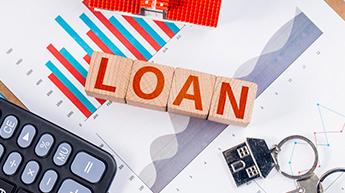Understanding the Basics: A Guide to 13 Different Types of Loans

Suppose you have unexpected needs that should be covered as soon as possible, want to buy a house or a new car but don’t have enough money. In this case, what type of loan would you choose? It’s challenging to decide on a loan, but don’t worry!
15M Finance presents 13 different types of loans that will fit your financial needs. But first, let’s see how loans work, the difference between secured and unsecured loans, and what interest you should choose: fixed or variable.
Table of Contents
- How Do Loans Work?
- Unsecured Loans vs. Secured loans
- Fixed vs. Variable Rates
- 13 Types of Most Used Loans
- What Type of Loan Has the Lowest Interest Rate?
- Bottom Line
How Do Loans Work?
Every type of loan has its features regarding the working process. Such particularities make them unique in front of a borrower that wants a personalized loan offer. However, some steps will make you understand how loans work:
- You apply for a loan by filling out a loan application form, be it online or in store, and submit it.
- After several minutes or at most one hour, you receive a loan approval decision.
- If your loan request is approved, the lender will make an offer that suits your financial information.
Here are loan components that will help you understand the whole process:The principal is the original amount of money you borrow from a lender. The loan term is the time frame that you must keep while repaying the loan. The interest rate is expressed in an annual percentage rate (APR), the fee your loan provider charges. Many lenders use just daily interest, calculated as follows: the annual percentage rate is divided by 365. Loan payments are the monthly or weekly installments you pay according to the loan terms.
- Once you accept and sign the loan agreement, the direct lender funds the money within one business day or sooner.
- You must repay your principal plus interest over the loan term. Each monthly payment covers that month’s interest plus some of the principal.
Unsecured Loans vs. Secured loans
When you’re in the market for a loan, it’s important to know the difference between unsecured and secured loans.
An unsecured loan is quite simple to define because it doesn’t require collateral. Such a loan typically has a higher interest rate than secured loans because it’s riskier for loan providers to lend money without collateral. You can use it to buy a car to pay off significant debts.
Unlike an unsecured loan, a secured one requires borrowers to bring collateral, such as real estate or a car. Thanks to the secured assets, these loans tend to have lower interest rates than unsecured loans.
Fixed vs. Variable Rates
Fixed rate loans are financial products with a fixed interest charge for the entire term. It means that you know exactly how much your monthly payments will be each month, and you won’t have to worry about any changes in interest rates.
Fixed-rate loans are an excellent option if you want to plan your finances. Simply put, they don’t change their charges during the loan term. Such a rate won’t affect your monthly payment.
Variable-rate loans are financial products whose interest may change over the repayment schedule, depending on market conditions. If market conditions improve and interest rates decrease, your monthly payments may also decrease. But they can also go up if market conditions worsen and the monthly installment increases.

13 Types of Most Used Loans
The world of loans develops daily, and you don’t have enough time to keep up with the changes. So, we decided to bring a list of the 13 most common types of loans:
1. Payday Loans
Payday loans are short-term products that help you quickly borrow money with no collateral but higher interest rates that might reach 375%. You may get a payday loan within 24 hours from approval and cover the unplanned expenses that can’t wait until your next paycheck.
The available loan amounts of payday loans range from $100 up to $1,000, depending on your state and the lender you apply with. Plus, a payday loan is repaid with one lump sum on your next payday, not monthly installments. If you take a $400 payday loan, you will have to pay back a fee of $40-$120 on top of the loan principal with your next paycheck.
2. Installment Loans
Installment loans are a great way to cover more significant needs without repaying the debt in one lump sum. You can borrow up to $5,000 from an installment loan. Don’t worry; it has flexible repayment schedules that won’t affect your monthly budget. More than that, such loans are cheaper than payday loans. Their interest rate doesn’t exceed 36%.
3. Personal loans
Personal loans are also considered installment loans because they are covered with monthly payments. You set up a schedule with your lender that fits your paycheck possibilities. It usually varies between one and seven years (or even longer). The interest rates are also lower than other types of loans; it ranges from around 4% to 36%. Personal loans can help you cover vacation costs, or finally start a home improvement project.
4. Auto Loans
With a car loan, you can get money for a new or used vehicle and repay it with fixed monthly payments. A car loan is usually used as an alternative to leasing. The maximum auto loan term is 36 months or more, depending on the amount you borrow.
The interest rates of car loans vary between 2.99% and 36.00%. They also may range based on the used or new cars you’re buying or your credit score. The higher your credit score (up to 850), the lower the interest rate.
5. Student Loans
Student loans are money that you borrow to pay for your education. With such loans, you can pay for vocational training or actual education classes, such as graduate school. Some students borrow these financial products to cover even a certificate program at a community college.
Depending on your education needs and possibilities, you can choose between federal student loans (issued by the government) and private student loans (administered by private lending companies). We recommend you choose wisely before applying for these student loans. If you borrow more than you can afford, it could lead to student loan default.
6. Mortgage Loans
Imagine a real estate loan that could help you buy a house or other property. Yes! We’re talking about mortgage loans. They work just as secured personal loans using collateral. However, these loans have one major disadvantage; if you don’t cover the mortgage on time, the bank can take ownership of your home.
The rates of mortgage loans vary according to the type of loan. You can choose among two types of mortgage loans: conventional and government-insured. On the one hand, conventional mortgages have a fixed interest rate that doesn’t change during the repayment term. On the other hand, government-insured mortgages have an adjustable interest charge that varies periodically based on an index such as the cost of living or prime rate.
7. Home Equity Loans
Home equity loans are secured personal loans that allow you to borrow money against the value of your home. Some people may mix up this type of loan with a bad credit home improvement loan, but they work differently, as the latter is unsecured and given for a specific purpose. The interest charge on home equity loans is usually lower than other loans. It ranges between 6.24% and 11.08%, and available loan amounts on the market are between $25,000 to $500,000. If you don’t pay off the loan, the lender will likely come after you for the balance owed on the loan.
8. Credit-Builder Loans
Credit-builder loans are loan products that help you build a credit history and prepare for a mortgage. It enables you to improve your credit score by making timely monthly payments and reporting them to the credit bureaus.
It might seem like an unnecessary step if you already have a long history of paying your bills on time. Still, sometimes even people with perfect payment histories need help building up their scores to qualify for certain loans. Most credit builder loans are small. The available loan amounts range from $300 to $1,000, and the repayment term is six to 24 months.
9. Debt Consolidation Loans
A debt consolidation loan helps you to have a single monthly payment instead of multiple installments on different loans. You can repay the debts on small debts and shorten or extend the time you’re in debt. But there is one condition: to qualify for a debt consolidation loan, you must have a good credit score and enough income.
10. Pawn Shop Loans
A pawn shop loan is another way to get extra money without waiting days for approval. It works straightforwardly; you bring a valuable object and pawn it. The lender assesses its value and gives you the cash immediately if you agree on the amount.
The average monthly interest rate on a pawnshop loan ranges from 20% to 25%. After some time, you have the right to redeem the object.
11. Small Business Loans
Small business loans are a great way to help you get the money you need to start or grow your business. Small businesses account for 99.7% of all companies in the United States and employ 55% of the American workforce.
The interest charges of a small business loan can vary widely based on the type of loan and lender. According to the Federal Reserve Bank of Kansas City, the average interest rate for all small business term loans in the first quarter of 2024 was 5.39%for fixed-rate loans and 6.25% for variable-rate loans.
12. Co-signed and Joint Loans
You can take out a loan together with a person who is called a co-signer. Such a loan is considered a co-signed or joint loan. If you can’t do it, this person is bound to repay the loan.
On the other hand, a joint loan is one you take out with another person, but they do not cosign it. Instead, they become an equal partner in the loan. It means both of you must repay the loan on time.
13. Lines of Credit
It’s hard to find an American that has no credit card or personal line of credit. According to statistics, nearly 83% of American households have at least one credit card. Thus, it’s one of the most popular loan types in the country.
Credit lines allow you to access money when needed within the limit set by a lender. The credit limit is usually determined based on the borrower’s income and credit score. The average interest rate varies by the type of product you get. For example, a home equity line of credit comes with an average APR of 5.35%, while a regular credit card interest rate is about 22%.
What Type of Loan Has the Lowest Interest Rate?
Nobody wants high-interest rates, which are the cost of borrowing money, because we need our financial problems to solve as cheaply as possible. These charges can vary widely depending on the type of loan you’re taking out. But if you want to avoid higher loan costs, here are some common types of loans with the lowest rates:
- Mortgages – 4% APR
- Auto loans – 7% APR
- Student loans – 6% APR
- Credit cards – 12% APR
Bottom Line
Before going ahead with any loan, just assess your financial problems and ask yourself: “What do I need a loan for?” If you have an exact answer, choosing a suitable loan product will be easy.
We hope this small guide helped you understand the particularities of loans available on the US market. Ensure you apply with a trustful lender with the best loan terms and conditions.
